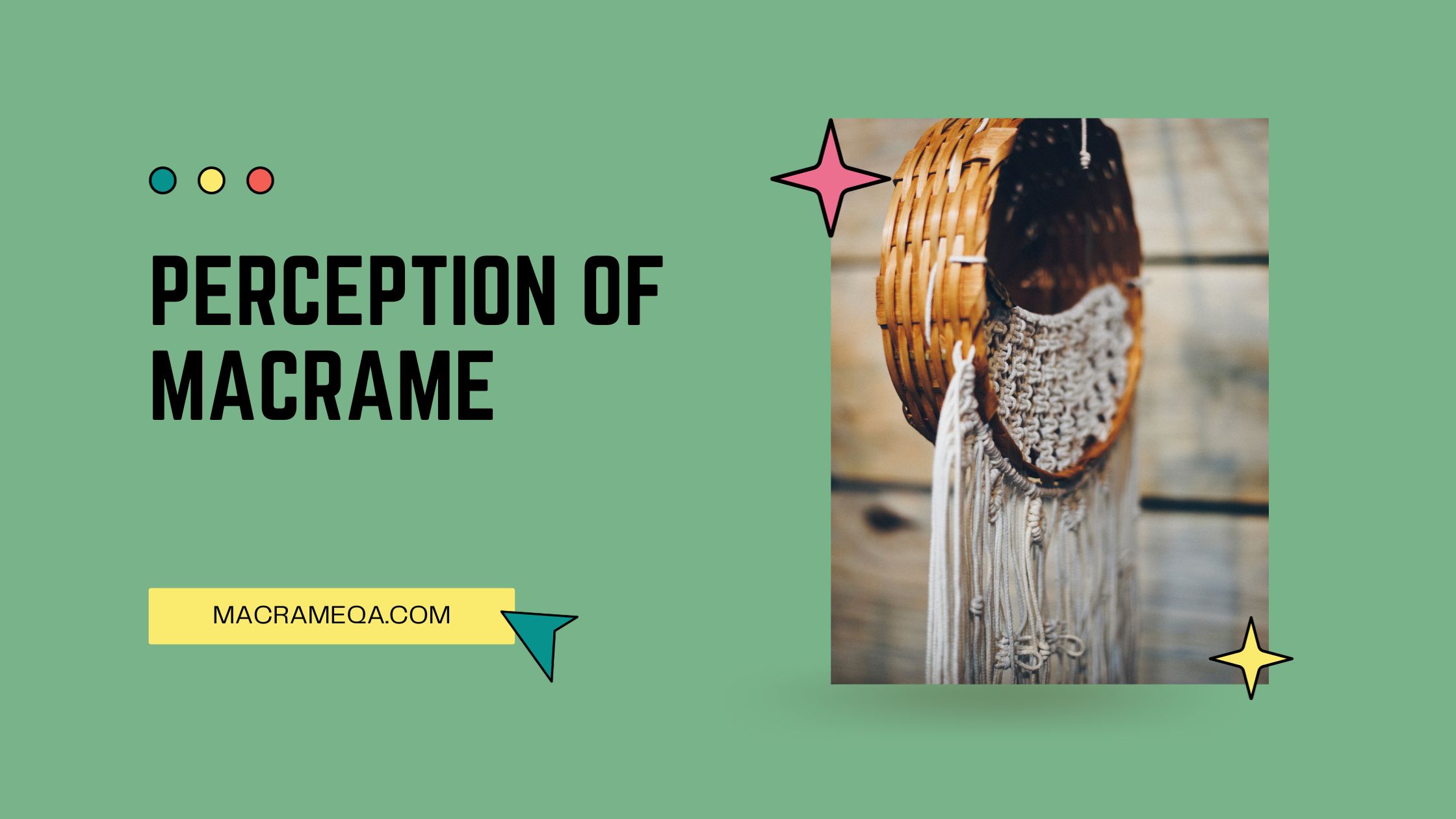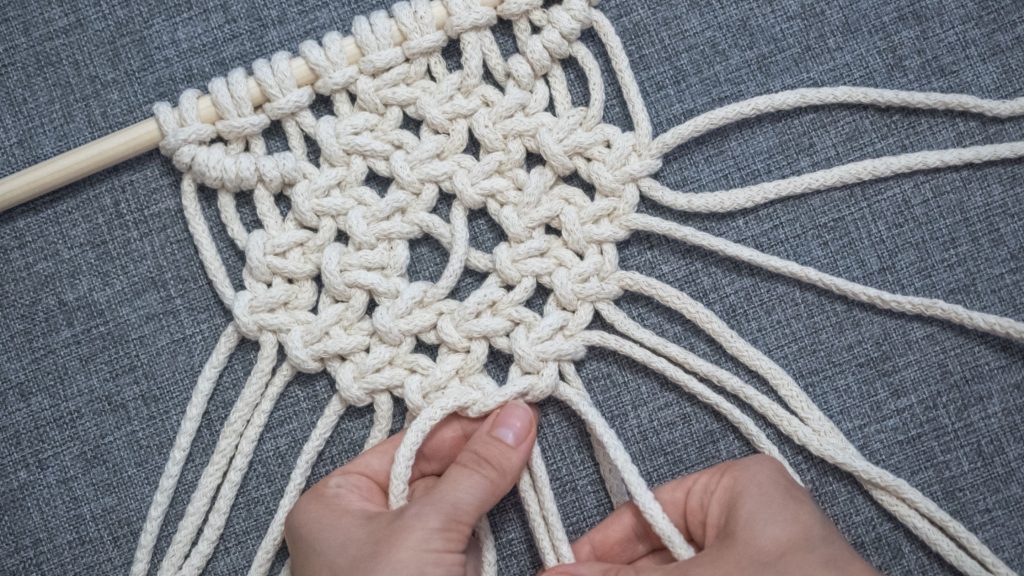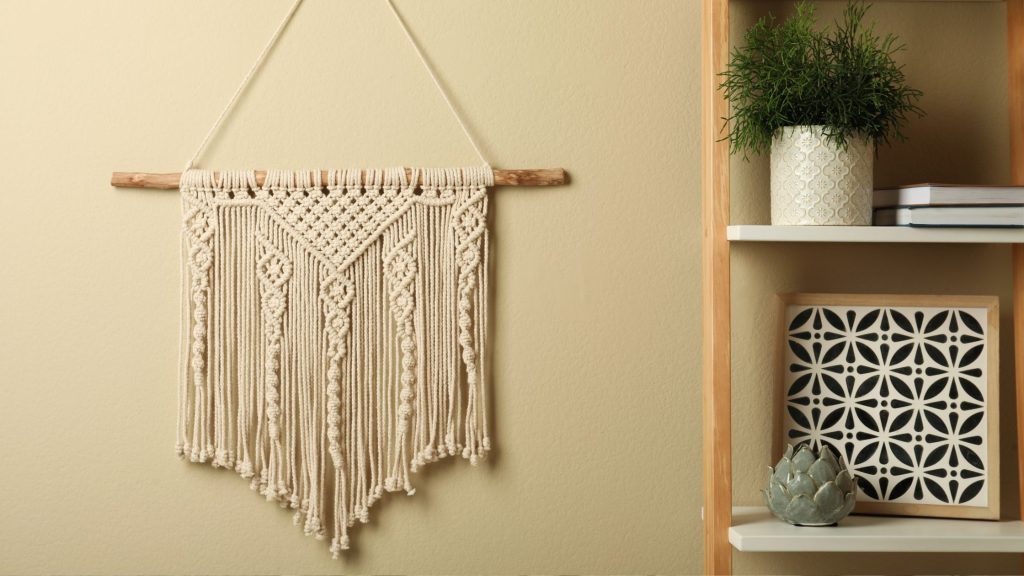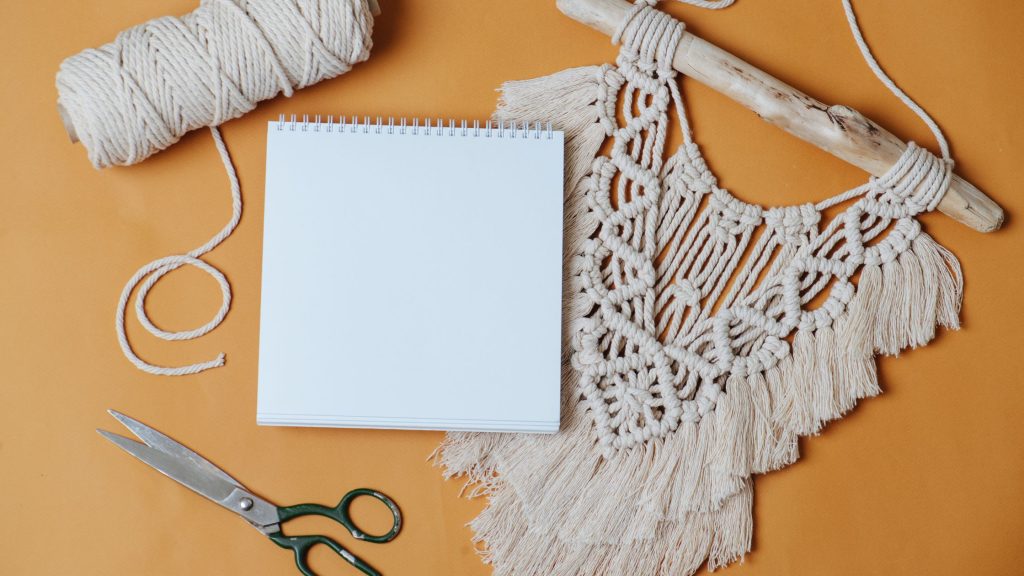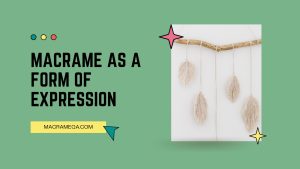Macrame, once considered a craft of the past, has made a surprising comeback in recent years. From Bohemian-inspired home decor to contemporary fashion accessories, macrame has found its way into the modern world, captivating people with its intricate knot designs and textured appeal. Gone are the days when this art form was associated solely with 1970s plant hangers; today, macrame has become a symbol of creativity and sustainability, championed by designers and DIY enthusiasts alike. This article explores the evolution of macrame, delving into the reasons behind its shifting perception and its newfound popularity.
Origins of Macrame
Macrame is an ancient art form that has stood the test of time, captivating people with its intricate knotting techniques and beautiful designs. Its origins can be traced back to early civilizations, where it was embraced as a practical and decorative craft.
Early origins of macrame
The exact origins of macrame are difficult to pinpoint, as it has been practiced by numerous cultures throughout history. Some believe that macrame first originated in Arabic countries, where it was used to create beautiful textiles and decorative items. Others suggest that it was the sailors of ancient China who first popularized the art of knotting.
Inclusion in ancient cultures
Macrame quickly gained popularity and found its way into the ancient cultures of Egypt, Persia, and Assyria. It was valued for its durability and versatility, making it ideal for creating practical items such as hammocks, fishing nets, and bags. In these societies, macrame was not only functional but also highly symbolic, often used to display wealth, status, and cultural significance.
Spread across the globe
As trade routes expanded, so did the influence of macrame. It made its way to Europe during the Moorish conquests of Spain and subsequently spread to other countries, including Italy and France. Throughout the centuries, macrame evolved and adapted to the different cultures it encountered, leaving a lasting impact on the global arts and crafts scene.
Macrame in the Modern Era
After a period of relative obscurity, macrame experienced a resurgence in the 1960s and 1970s, reflecting the changing social and artistic landscapes of the time.
Revival in the 1960s and 1970s
As the counterculture movement swept across the United States and Europe, macrame became associated with the free-spirited and bohemian lifestyle embraced by many during this era. It was seen as a way to express individuality, creativity, and a connection to nature.
Macrame as a DIY trend
One of the defining characteristics of macrame’s modern revival was its accessibility. Macrame patterns and instructions were widely shared, allowing people to create their unique pieces at home. Craft stores and magazines dedicated entire sections to macrame, providing the materials and inspiration needed to embark on creative projects.
Popularity in home decor
Macrame quickly found its way into homes as a fashionable and affordable way to add texture, warmth, and a touch of the natural world to interior spaces. Plant hangers, wall hangings, and curtains adorned with macrame knots became popular choices among homeowners looking for a boho-chic aesthetic.
Influence in fashion
Fashion designers also embraced macrame, incorporating it into clothing, accessories, and even footwear. The intricacy and versatility of macrame allowed for endless design possibilities, from elaborate wedding dresses to delicate lace-like jewelry. Macrame transformed fashion, giving it a unique and handcrafted feel.
Evolution of Macrame Techniques
Macrame has evolved dramatically over time, with the introduction of new knotting techniques, patterns, and materials pushing the boundaries of this ancient art form.
Traditional knotting techniques
Traditional macrame relied on a few key knotting techniques, such as the square knot, clove hitch, and double half-hitch. These simple yet versatile knots formed the foundation of macrame, allowing artists to create intricate and elaborate designs.
Introduction of new knots and patterns
As macrame gained popularity in the modern era, artists began to experiment with new knotting techniques and patterns. The introduction of spiral knots, lark’s head knots, and Josephine knots expanded the artistic possibilities of macrame, creating more complex and visually striking designs.
Experimentation with materials
Traditionally, macrame was created using natural fibers such as cotton, linen, and hemp. However, the modern era saw artists pushing the boundaries of macrame by incorporating unconventional materials such as wire, metal, and even recycled materials. This experimentation added a contemporary twist to the traditional craft, expanding its creative potential.
Macrame in Art and Design
Macrame is not limited to functional items or home decor; it has also found a place in the world of art and design, where its versatility and intricate beauty shine.
Macrame artists and their contributions
Talented macrame artists have emerged throughout history, each making unique contributions to the craft. Artists like Mariano Fortuny, Ethel Stein, and Freda Pagani have elevated macrame to an art form by pushing the boundaries of design and embracing innovation. Their stunning creations have inspired countless others to explore the artistic possibilities of macrame.
Macrame installation art
Macrame’s large-scale installation art has become increasingly popular in recent years. These intricate and immersive pieces transform entire spaces, offering viewers a sensory experience like no other. Macrame installation art blurs the lines between craft and fine art, igniting conversations about the intersection of traditional techniques and contemporary artistic expression.
Integration into contemporary design
Macrame has also gained recognition in the world of contemporary design. It is embraced by interior designers, architects, and furniture makers who appreciate its textural qualities and ability to add depth and interest to their creations. From macrame-inspired light fixtures to custom-designed wall panels, the integration of macrame into contemporary design demonstrates its continued relevance and versatility.
Macrame in the Digital Age
With the advent of the internet and social media, macrame has found a whole new audience and experienced a modern renaissance.
Online tutorials and communities
The internet has become a treasure trove of macrame resources, making it easier than ever for enthusiasts to learn and master the craft. Online tutorials, blogs, and video platforms offer step-by-step instructions, patterns, and inspiration for anyone curious about diving into the world of macrame. Online communities and forums also provide a platform for sharing knowledge, connecting with fellow macrame lovers, and showcasing completed projects.
The influence of social media platforms
Social media platforms like Instagram, Pinterest, and TikTok have propelled macrame into the mainstream, offering a visual feast of macrame creations to a global audience. These platforms have given rise to influential macrame artists and designers, who garner thousands of followers and inspire countless others to try their hand at the craft. Macrame hashtags and challenges allow people to connect and share their creations, contributing to the growing macrame community online.
Macrame’s status as a viral trend
In the digital age, trends come and go at a rapid pace, and macrame has not been exempt from this phenomenon. From viral TikTok videos demonstrating macrame techniques to influencers incorporating macrame into their lifestyle content, the craft has experienced moments of intense popularity. While the viral nature of macrame may ebb and flow, its timeless appeal and enduring beauty ensure that it will continue to captivate individuals for years to come.
Cultural Perspectives on Macrame
Macrame is not solely confined to Western cultures; it has been embraced and adapted in various forms across different countries and traditions.
Macrame in different cultures
Macrame has found a place in the artistic and cultural traditions of many societies around the world. From the intricate macrame techniques of the Native Americans to the colorful patterns of Latin American countries, each culture has its unique interpretation of this ancient craft. Macrame has become a way for people to express their cultural heritage and preserve their traditional artistic practices.
Symbolism and meanings associated with macrame
Throughout history, macrame has been imbued with symbolism and deeper meanings. In some cultures, macrame was thought to bring protection, luck, or fertility. Certain knot patterns were believed to ward off evil spirits or bring blessings to a household. Macrame’s significance varies from culture to culture, but its ability to convey emotions and convey stories through knots is a universal language.
Adaptation of macrame in various traditions
As macrame has traveled across continents and cultures, it has adapted and evolved, taking on unique characteristics in each region. In countries like India and China, macrame techniques have been incorporated into traditional textile production, resulting in exquisite fabrics and garments. In parts of Africa, macrame is used to create intricate jewelry that holds cultural significance. The adaptability of macrame ensures that it remains a living craft, integrating with diverse artistic traditions and becoming a part of different cultural narratives.
Macrame as a Sustainable Craft
As sustainability and eco-consciousness become increasingly important, macrame has gained recognition for its ability to align with these values.
The eco-friendly nature of macrame
The materials used in macrame, such as organic cotton, hemp, and recycled fibers, are more environmentally friendly than synthetic alternatives. Macrame also requires minimal equipment, primarily consisting of a simple set of tools and your hands, reducing the carbon footprint associated with other crafts. By choosing macrame, individuals can engage in a creative pursuit while minimizing their impact on the environment.
Upcycling and repurposing with macrame
Macrame provides a unique opportunity to breathe new life into old or discarded materials. By incorporating repurposed fabrics or materials into their projects, macrame enthusiasts can contribute to the upcycling movement and reduce waste. This sustainable approach not only benefits the environment but also adds an element of individuality and creativity to each macrame creation.
Macrame as a mindful and meditative practice
The process of creating macrame encourages mindfulness and a sense of calm. The repetitive motions of knotting engage both the mind and the body, allowing practitioners to enter a meditative state. Macrame’s slow pace and attention to detail promote relaxation and can serve as a form of stress relief in our fast-paced world. The meditative qualities of macrame make it not just a craft but also a mindful practice.
Macrame’s Influence on Other Crafts
Macrame’s enduring appeal and distinctive techniques have had a profound impact on various other crafts, inspiring artists and artisans to incorporate macrame elements into their work.
Macrame’s impact on weaving and tapestry
The art of weaving and macrame share a common thread, with both crafts involving the interlacing of fibers to create intricate patterns. Macrame has influenced the world of weaving, inspiring weavers to incorporate macrame knots and techniques into their tapestries. This fusion of techniques creates visually stunning textiles that blur the boundaries between weaving and macrame.
Incorporation of macrame into jewelry-making
Jewelry makers have also embraced macrame as a way to create unique and eye-catching pieces. Macrame knots can be used to create intricate bracelets, necklaces, and earrings, providing a texture and depth that sets these creations apart from traditional jewelry. Macrame jewelry offers a wearable art form that allows individuals to showcase their love for macrame in a more personal and intimate way.
Cross-pollination with other fiber arts
Macrame’s distinct style and knotting techniques have influenced other fiber arts such as knitting, crochet, and embroidery. Artists and crafters have borrowed macrame’s unique knotting methods to add a touch of macrame to their creations. The cross-pollination of macrame with other fiber arts has resulted in stunning combinations of textures and techniques, pushing the boundaries of traditional crafts and fostering creativity.
Macrame in Contemporary Fashion
The world of fashion has not been immune to the allure of macrame. Designers are drawn to its intricate beauty and handcrafted quality, incorporating macrame into their creations.
Designers embracing macrame
Renowned fashion designers have embraced macrame in their collections, elevating the craft to haute couture status. Designers like Stella McCartney, Givenchy, and Isabel Marant have used macrame techniques to create show-stopping pieces that grace the runways of fashion capitals around the world. The integration of macrame into high-end fashion highlights its artistic value and sets it apart as a timeless and elegant craft.
Macrame in haute couture
Haute couture and macrame have become synonymous with each other. The level of detail and craftsmanship involved in macrame aligns perfectly with the meticulous craftsmanship required in haute couture. Macrame elements, such as delicate lace-like overlays and intricately knotted bodices, add a unique touch of refinement and individuality to couture creations, making them truly one-of-a-kind.
Macrame accessories and elements
Macrame is not limited to clothing; it has also found its way into fashion accessories. Macrame handbags, belts, and shoes showcase the versatility of the craft, allowing individuals to incorporate macrame into their everyday style. These accessories add a bohemian and artisanal element to any outfit, turning heads and sparking conversations about the timeless appeal of macrame.
Discovering a New Appreciation for Macrame
In recent years, macrame has experienced a renaissance, capturing the imagination of both seasoned crafters and a new generation of enthusiasts.
The renaissance of macrame in recent years
Macrame has firmly reestablished itself as a popular craft in recent years, with a resurgence of interest and appreciation for the art form. This renewed enthusiasm can be attributed to a longing for craftsmanship, personalization, and a desire to connect with nature in an increasingly digital world. Macrame provides a fulfilling and creative outlet for individuals seeking a break from the fast-paced modern lifestyle.
Growing interest and demand
Macrame workshops, classes, and gatherings have become increasingly popular, drawing people from all walks of life who are eager to learn the craft and connect with others who share their passion. Craft fairs and markets dedicated to macrame continue to attract crowds, reflecting the growing demand for handmade and one-of-a-kind creations. The renewed interest in macrame has sparked a sense of community and camaraderie among macrame enthusiasts, further fueling the craft’s resurgence.
Macrame’s versatility and timeless appeal
What sets macrame apart and ensures its lasting appeal is its versatility. Macrame can be tailored to suit any individual’s style, whether they prefer minimalist and modern designs or bohemian and eclectic creations. Its ability to be incorporated into various crafts, from home decor to fashion, further showcases its adaptability and enduring relevance. With its timeless beauty and infinite creative possibilities, macrame has secured a cherished place in the hearts of those who appreciate the art of knotting.
Conclusion
In conclusion, the perception of macrame has undeniably changed over time. What was once a practical craft used for functional purposes has transformed into a beloved art form embraced by people around the world. From its ancient origins to its modern revival, macrame has captivated the imaginations of artists, crafters, and individuals seeking a creative outlet. Its intricate knotting techniques, rich cultural history, and versatility make macrame a timeless craft that continues to evolve, inspire, and find new admirers with each passing generation.

